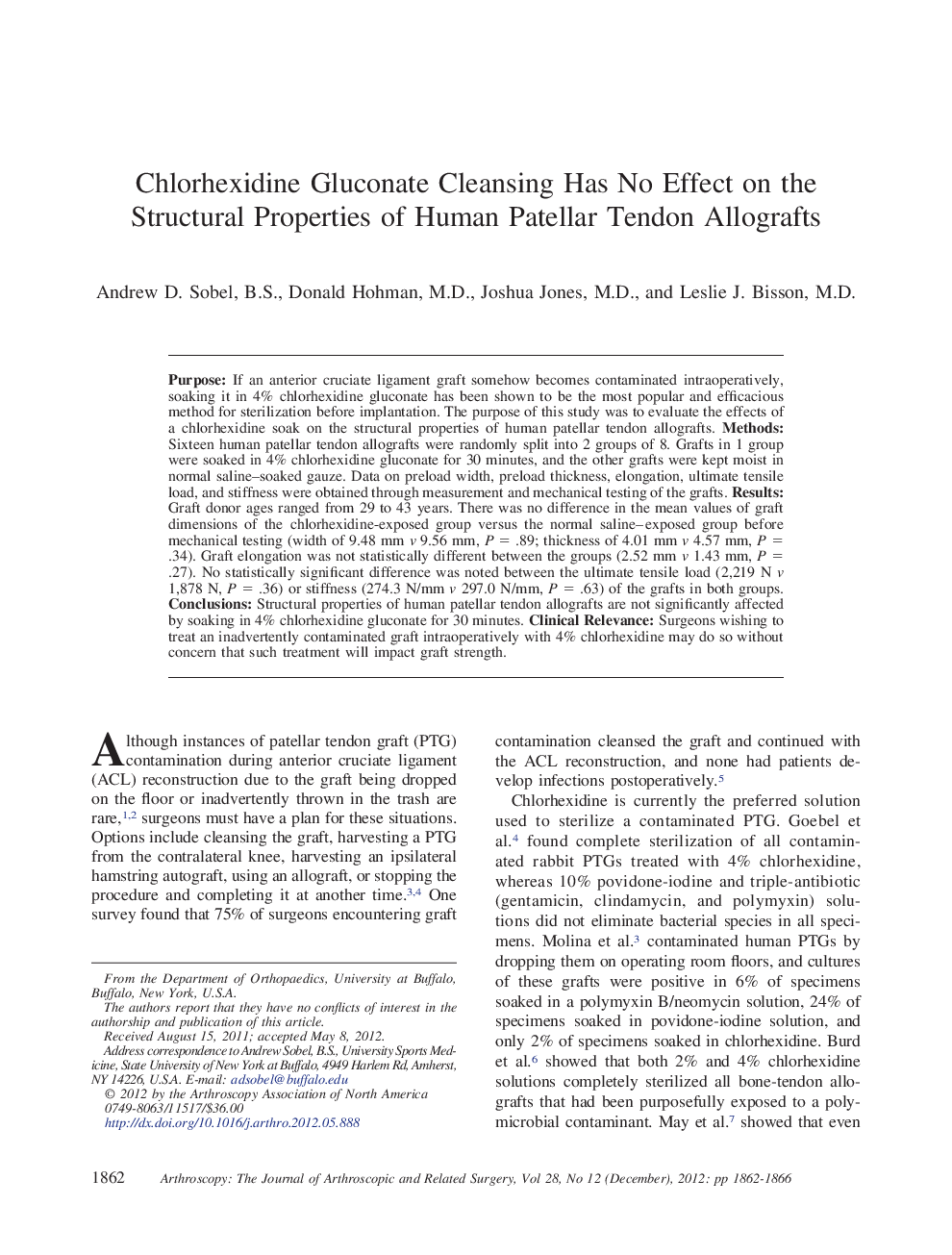| Article ID | Journal | Published Year | Pages | File Type |
|---|---|---|---|---|
| 4044042 | Arthroscopy: The Journal of Arthroscopic & Related Surgery | 2012 | 5 Pages |
PurposeIf an anterior cruciate ligament graft somehow becomes contaminated intraoperatively, soaking it in 4% chlorhexidine gluconate has been shown to be the most popular and efficacious method for sterilization before implantation. The purpose of this study was to evaluate the effects of a chlorhexidine soak on the structural properties of human patellar tendon allografts.MethodsSixteen human patellar tendon allografts were randomly split into 2 groups of 8. Grafts in 1 group were soaked in 4% chlorhexidine gluconate for 30 minutes, and the other grafts were kept moist in normal saline–soaked gauze. Data on preload width, preload thickness, elongation, ultimate tensile load, and stiffness were obtained through measurement and mechanical testing of the grafts.ResultsGraft donor ages ranged from 29 to 43 years. There was no difference in the mean values of graft dimensions of the chlorhexidine-exposed group versus the normal saline–exposed group before mechanical testing (width of 9.48 mm v 9.56 mm, P = .89; thickness of 4.01 mm v 4.57 mm, P = .34). Graft elongation was not statistically different between the groups (2.52 mm v 1.43 mm, P = .27). No statistically significant difference was noted between the ultimate tensile load (2,219 N v 1,878 N, P = .36) or stiffness (274.3 N/mm v 297.0 N/mm, P = .63) of the grafts in both groups.ConclusionsStructural properties of human patellar tendon allografts are not significantly affected by soaking in 4% chlorhexidine gluconate for 30 minutes.Clinical RelevanceSurgeons wishing to treat an inadvertently contaminated graft intraoperatively with 4% chlorhexidine may do so without concern that such treatment will impact graft strength.
